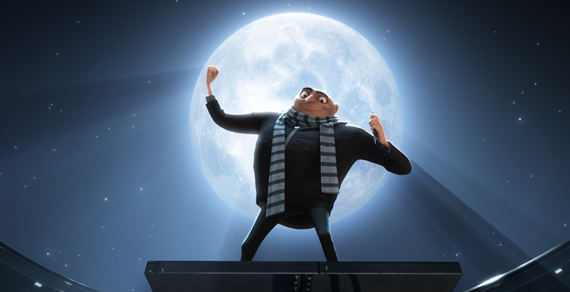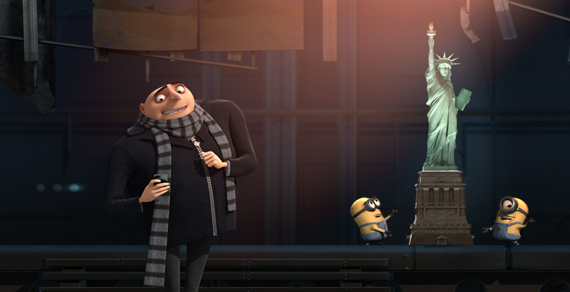The Paris-based Arm of Illumination Entertainment Builds on the Shotgun Platform for Tighter Pipeline Integration

A scene for Dr. Seuss’ The Lorax, currently in production at Illumination Mac Guff.
Illumination Mac Guff brought in Shotgun, a commercially developed production management and collaboration system, to see if it could be a fit. “We really liked the open-API approach Shotgun took. It gave us a proven, reliable framework and let us focus on building in the specifics of the studio,” says Mahe.
Shotgun is a web-based system designed specifically for visual effects, CG feature animation and video game developers that gives all involved in a project instant access to critical data, messaging and real-time project progress. It is also highly customizable via its open API, which lets studios use Shotgun as a central platform around which they can quickly build custom tools and bridges to other applications using Python scripting.
“Shotgun was like a canvas ready to be used,” says Mahe. “It gave us the basics of tracking assets, production and production software — that’s what made people happy. It gave us a way to formalize what we had been doing for years. But it’s the wrapping functionality, the flexibility, that is probably its biggest benefit. We knew instantly that Shotgun was something we could build on.”
And build on it they have. Throughout the production of Despicable Me, Illumination Mac Guff managed the work of artists and production staff through Shotgun, using the software as the central platform for managing and reporting on lists of shots and breakdowns to maximize efficiency on the low-budget/high-return blockbuster.

A scene from the original Despicable Me. The facility is just starting production of Despicable Me 2.
“Shotgun’s production tracking system integrates into Illumination Mac Guff’s unique studio workflow to provide visibility at every level of the production process," says Robert Taylor, Associate Producer at Illumination Mac Guff. “We employed over 300 artists for both Despicable Me and Dr. Seuss’ The Lorax, who accessed shots through Shotgun’s user-friendly interface, tracking over 1,500 shots through 14 production departments.”
Over the past two-and-a-half years Illumination Mac Guff has been progressively integrating Shotgun with its proprietary INK asset management system; the RV playback and review system; a proprietary render manager; artist tools like Nuke and Maya; and most recently, the facility’s proprietary timecard system. “We’ve been getting deeper into Shotgun with every production, from Despicable Me to Dr. Seuss’ The Lorax to Despicable Me 2, which is just going into production,” says Mahe. “We’re using the API a lot, extracting information out of Shotgun and pushing information in about animation, scenes and versioning.”
Illumination Entertainment, based in Los Angeles, also uses Shotgun, which streamlines production management even further between the West Coast production company and the Paris studio as the partners work in a similar way using similar tools.
While the Shotgun platform has become an invaluable center for Illumination Mac Guff, the studio’s partnership with the Shotgun team has also been a key part of their success with the tool. “The thing we appreciate most about Shotgun is that the people there really understand what we’re doing, and they really know what they’re doing. That is rare in the industry and it’s really important,” says Mahe. “When we started working with Shotgun we had to make sure this was the right software for us. The test proved that they understand production and how to address it, and trust came quickly. We’re now on our third production with Shotgun and each time we integrate it more and more. At no point did we ever say there’s an issue for how they had made the software. That proves something. It really works. It does the job and in a quite brilliant way."

Another scene from the original Despicable Me.
“I had the good fortune of watching the Shotgun team build the program before they were ‘Shotgun’ and have always insisted on working with them as they have created the most viable production tracking software in the industry," adds Taylor. "Its robust design, flexibility and scalability let us monitor and track our productions with confidence and ease.”

Sections: Business Creativity Technology
Topics: Project/Case study
Did you enjoy this article? Sign up to receive the StudioDaily Fix eletter containing the latest stories, including news, videos, interviews, reviews and more.
